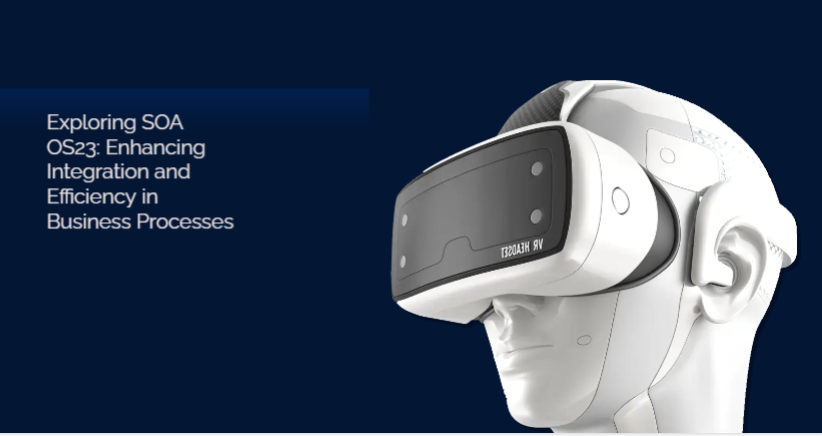SOA OS23: In today’s fast-paced digital era, businesses face a constant challenge: how to connect diverse systems, streamline workflows, and ensure smooth data flow across various departments all without compromising on speed, security, or scalability. Service-Oriented Architecture (SOA) OS23 is emerging as a powerful solution to these problems, helping organizations integrate applications, improve collaboration, and optimize processes with remarkable efficiency.
This article explores what SOA OS23 is, why it matters, and how it can solve real-world business challenges making it an essential tool for companies looking to stay competitive in a connected world.
What Is SOA OS23?
SOA OS23 is the latest evolution of Service-Oriented Architecture, a design approach that organizes software as a collection of interoperable services. Each “service” performs a specific business function and communicates with others through well-defined interfaces, regardless of the platform, programming language, or technology stack used.
What makes OS23 different from traditional SOA solutions is its focus on automation, scalability, and adaptability. It’s not just about connecting applications, it’s about creating a flexible ecosystem where data, services, and processes work seamlessly together, enabling faster decision-making and improved operational efficiency.
Why SOA OS23 Matters Today
Modern businesses often rely on multiple tools — ERP, CRM, analytics, cloud apps, and legacy systems — that don’t always “talk” to each other. As a result:
- Data becomes siloed across departments.
- Manual workflows slow down decision-making.
- Integrating new tools requires expensive custom development.
- Security and compliance risks increase with fragmented systems.
SOA OS23 addresses these challenges by breaking down barriers between systems and creating a unified communication layer. This means businesses can integrate new services quickly, share data in real time, and respond to market changes faster without completely overhauling their existing infrastructure.
Key Features of SOA OS23
To understand how SOA OS23 enhances integration and efficiency, let’s look at some of its core features:
1. Seamless Interoperability
SOA OS23 enables different applications and services to communicate effortlessly even if they’re built on different platforms or written in different programming languages.
2. Scalable Architecture
Businesses can easily add, remove, or modify services without affecting the overall system. This makes scaling operations or integrating new tools a smooth process.
3. Automation and Workflow Orchestration
With built-in automation capabilities, SOA OS23 reduces manual intervention. Complex workflows can be orchestrated across departments with minimal coding.
4. Enhanced Security and Compliance
SOA OS23 comes with advanced encryption, access controls, and compliance management features, ensuring secure data exchange between systems.
5. Real-Time Data Exchange
It supports real-time data communication, ensuring that teams have the most accurate and up-to-date information available for decision-making.
Solving Real Business Problems with SOA OS23
Problem 1: Disconnected Systems and Data Silos
Solution: SOA OS23 integrates legacy systems, cloud apps, and third-party services into a single cohesive ecosystem. This allows data to flow freely between departments — improving visibility, collaboration, and decision-making.
Problem 2: Slow Business Processes and Manual Workflows
Solution: By automating repetitive tasks and orchestrating workflows across systems, SOA OS23 reduces human error and speeds up operations. Teams can focus on strategic work instead of manual data handling.
Problem 3: High Integration Costs and Time Delays
Solution: Traditional system integrations often require costly custom code. SOA OS23’s modular, service-based approach allows businesses to “plug and play” services with minimal development, reducing both cost and deployment time.
Problem 4: Difficulty Scaling IT Infrastructure
Solution: Whether you’re expanding into new markets or adopting new technologies, SOA OS23’s flexible architecture allows seamless scaling without disrupting existing operations.
Problem 5: Compliance and Security Risks
Solution: Built-in security protocols and governance tools ensure that data sharing and service communication comply with industry standards and regulations.
How Businesses Can Implement SOA OS23
Here’s a step-by-step roadmap for organizations looking to adopt SOA OS23:
- Assess Current Systems: Identify existing applications, services, and integration points that need improvement.
- Define Business Goals: Determine what you want to achieve (e.g., faster workflows, better data sharing, reduced costs).
- Design the SOA Strategy: Create a service map and plan how different systems will communicate.
- Start with Key Services: Begin by integrating the most critical services first, then gradually expand.
- Monitor and Optimize: Use analytics tools to track performance, find bottlenecks, and continuously optimize the architecture.
Future of SOA OS23: Beyond Integration
The future of SOA OS23 lies in its synergy with emerging technologies like AI, machine learning, IoT, and cloud-native platforms. By combining these technologies with service-oriented design, businesses can unlock even greater automation, predictive capabilities, and adaptive decision-making paving the way for truly intelligent, self-optimizing systems.
Final Thoughts:
In a world where speed, agility, and integration define business success, SOA OS23 offers more than just a technical solution; it’s a strategic enabler. By connecting fragmented systems, automating workflows, and providing real-time data insights, it empowers organizations to operate more efficiently, scale effortlessly, and respond faster to change.
Whether you’re a small business aiming to modernize your operations or a large enterprise managing complex IT ecosystems, SOA OS23 can be the backbone of your digital transformation strategy solving today’s challenges and preparing you for tomorrow’s opportunities.
